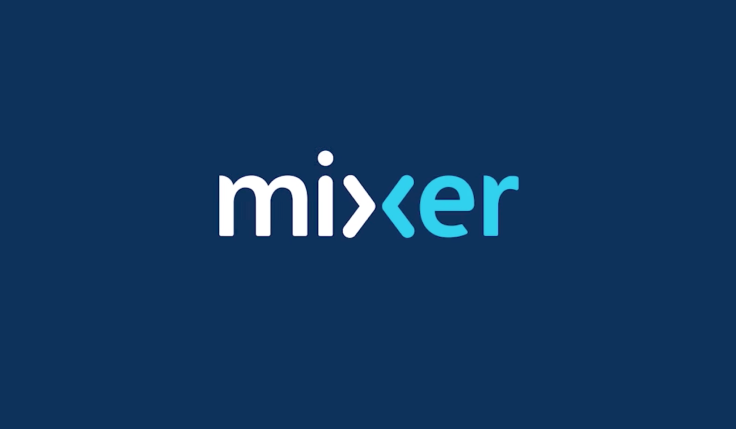Microsoft’s Mixer Is Catching Up To Amazon’s Twitch And Google’s YouTube

Microsoft (NASDAQ:MSFT) launched a video game streaming platform called Beam three years ago. However, Beam never gained much steam against Amazon's (NASDAQ:AMZN) Twitch and Alphabet's (NASDAQ:GOOG) (NASDAQ:GOOGL) YouTube.
Microsoft rebranded Beam as Mixer in mid-2017, and added new features like co-streaming and support for mobile games. However, Mixer didn't really start turning heads until Twitch's top star Tyler "Ninja" Blevins abruptly moved his live streaming channel to Mixer this August.
Microsoft reportedly agreed to pay Blevins about $50 million (over an unspecified period) for the move, but it dealt Twitch a serious blow and caused Mixer downloads to skyrocket. Blevins has already attracted over 2.3 million followers since the switch, and the latest numbers from Streamlabs and Newzoo indicate that Mixer is finally gaining ground against Twitch and YouTube.
What do the latest numbers tell us?
Between the third quarters of 2018 and 2019, Mixer's number of hours watched more than doubled annually to 90.2 million, while Twitch's number of hours watched rose 11% to 2.55 billion.
That's a big gap, but Mixer's number of hours streamed nearly tripled to 32.6 million -- which was likely attributed to Ninja's move to the platform. Twitch's number of hours streamed rose just 4% to 87.3 million.
Streamlabs only started tracking YouTube's gaming data since the first quarter of 2019, but the video platform ended the third quarter with 675.9 million hours of watched games and 11.1 million streamed hours.
This means Mixer surpassed YouTube in terms of total streamed hours for the first time in the third quarter. Mixer remains far behind Twitch and YouTube in terms of total viewers, but its triple-digit growth rates suggest that it could narrow the gap over the next few quarters.
Mixer ended the third quarter with 3.9 million unique channels, versus Twitch's 3.8 million unique channels and less than a million unique gaming channels on YouTube. That lead is impressive, but it's a double-edged sword since it indicates that Mixer has fewer viewers per channel than Twitch and YouTube.
Why does Microsoft need Mixer?
Microsoft integrates Mixer into Windows 10 and the Xbox One. It mainly generates revenue from subscriptions to channels and sales of virtual "embers" for tipping streamers. Viewers can also earn "sparks" by passively viewing videos and use them to tip broadcasters, who then convert them back into real money.
Microsoft doesn't disclose how much revenue Mixer generates, but it's likely a tiny percentage of its total gaming revenue, which rose 10% to $11.4 billion last year and accounted for 9% of the tech giant's top line.
Most of that revenue came from sales of Xbox One consoles, games, and subscription services like Xbox Live and Xbox Game Pass. To lower the barriers between its gaming platforms, Microsoft lets gamers stream their Xbox One games to Windows 10 PCs on the same network. It's also developing a new cloud gaming platform, Project xCloud, which could stream console-quality games to multiple devices.
Google already recently unveiled its cloud gaming platform, Stadia, which it's integrating with YouTube to create a cohesive esports video platform. Amazon hasn't launched a cloud gaming service yet, but it's developing first party games and offering other gaming services to expand Twitch's reach.
Microsoft likely saw the ecosystem war brewing in the esports market and realized that it lacked a heavyweight streaming video platform (like Twitch or YouTube) to unite its gaming services. That's why it launched Beam in 2016, and why it invested millions into the evolution of Mixer.
But will Microsoft need to subsidize more streamers?
Microsoft is making solid progress with Mixer, but it isn't a "Twitch killer" yet. Ninja has over two million followers now, but that's still a tiny audience compared to the 14 million followers he left behind at Twitch.
This indicates that top streamers like Ninja won't simply abandon Twitch unless Microsoft comes knocking with big deals. If that happens, Microsoft could get stuck subsidizing Mixer's growth -- which could be wasteful if it fails to offset those expenses with stronger sales of subscriptions or embers.
But for now, Microsoft seems to be on the right track. Mixer could gain newer broadcasters who don't want to compete for attention on Twitch and YouTube, and its growth could complement the ongoing expansion of its gaming ecosystem -- which should kick into high gear next year with the launch of the new Xbox.
This article originally appeared in the Motley Fool.
Leo Sun owns shares of Amazon. The Motley Fool owns shares of and recommends Alphabet (A shares), Alphabet (C shares), Amazon, and Microsoft. The Motley Fool has the following options: long January 2021 $85 calls on Microsoft. The Motley Fool has a disclosure policy.




















